Employability Toolkit
READYourself
Welcome to the toolkit that will take you on a step-by-step journey from defining yourself and your purpose, choosing your career path and identifying recruitment opportunities to aspects of job application processes and professional branding all the way through to alternative career pathways.
By The Greenwich College Team
Research, Explore, Activate, Design, Yield
So here you are – just finished High School, trying to decide on a potential future career, returning to the job market from maternity leave or time away from work, currently in the job market but aspiring to change careers or simply wanting to upskill.
Whatever your life circumstances might be, you have made the first right decision to study a diploma at Greenwich College. And now that you have laid the foundations for your future educational and professional development, you should start to think about the next step: your desired career path. And this is where employability comes into play. You might think that you will finish your diploma and will be employable straightaway. The truth is, however, that your diploma is only one essential aspect of your employability. Are you confused?
Employability is a broad term that encompasses not only skills and qualifications but also experience, personal growth and state of mind. With job market competitiveness on the rise and global transformations shaping our everyday lives, your employability has become more than essential if you want to stand out from the crowd and take your future to the next level.
This is why we created this employability toolkit for our aspiring professionals to READYourself: Research, Explore, Activate, Design, Yield. Here at Greenwich College, we have incorporated employability aspects as one of our core missions in order to equip our students with the best possible graduate outcomes: high graduate employment rates, employment in desired industries and occupations, and fast job market integration.
READYourself will enable you to identify your personal job market niche and create your personal brand to pave the way towards a fulfilling career in your desired occupation.This guide will take you on a step-by-step journey from defining yourself and your purpose, choosing your career path and identifying recruitment opportunities to aspects of job application processes and professional branding all the way through to alternative career pathways. Each section has READYourself activities that will enable you to apply the contents and complete your employability package step by step.
Phase 1: Research your Market
Knowing your market and the opportunities it offers is the first step when mapping your career path. Let’s explore.
Based on the Australian and New Zealand Standard Industrial Classification (ANZSIC), 19 major industry fields can be identified for your job search:
- Accommodation and food services
- Administrative and support services
- Agriculture, forestry and fishing
- Arts and recreation services
- Construction
- Education and training
- Electricity, gas, water and waste services
- Financial and insurance services
- Health care and social assistance
- Information media and telecommunications
- Manufacturing
- Mining
- Other services
- Professional, scientific and technical services
- Public administration and safety
- Rental, hiring and real estate services
- Retail trade
- Transport, postal and warehousing
- Wholesale trade.
Click on the link above to explore some that interest you. If you want to get more in-depth industry insights, you can also consult the following websites: myskills, myfuture, nationalskillscommission, nationalindustryinsights, Imip and ibisworld.
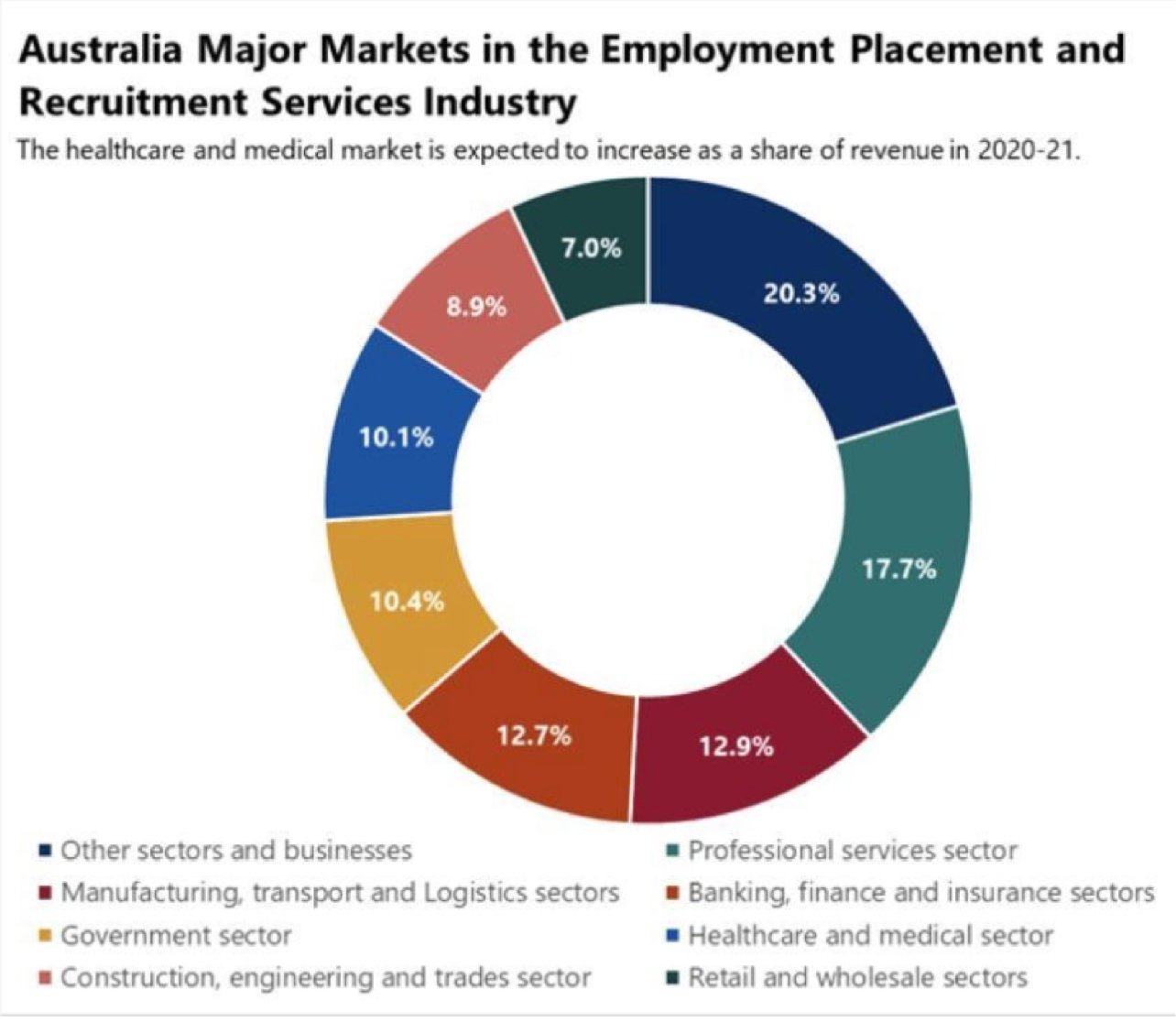
Now, let’s have a look at current vacancies. According to the recently published IMP Vacancy report, there has been an annual increase in job advertisement numbers of 96.4%, and these figures are even up 42% from pre-COVID-19 levels.
Monthly Report March 2021
In terms of territory distribution, NSW was the state with the highest recruitment activity, followed by Victoria, Queensland and WA.
Looking at the 8 broad occupational groups, the highest recruitment activity was recorded for professionals.
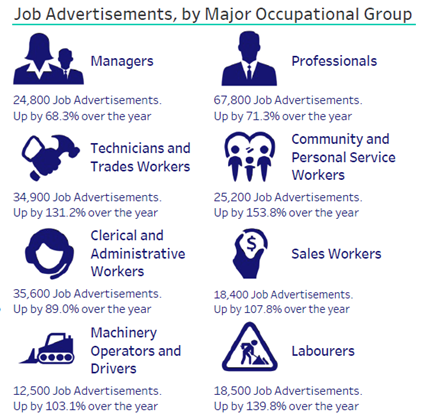
The report found that unemployment is decreasing while the number of vacancies is on the rise, which points to a bright outlook for aspiring professionals.
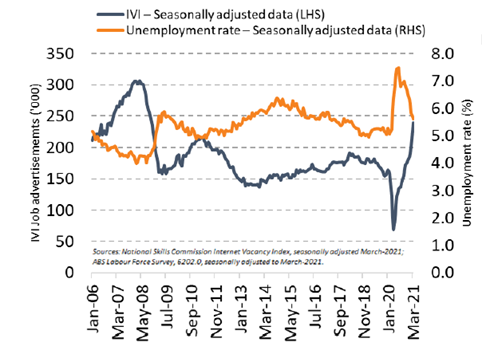
For more detailed data specific to industries and occupations, please consult the February 2021 Quarterly Employment Growth Rates by Industry and Occupation.
The highest demand currently exists in the fields of Health Care and Social Assistance, Professional, Scientific and Technical Services, Education and Training, and Construction. Additional information on in-demand professions and others with decreasing trends can be found here.
In addition, there are various occupations for which the economy is experiencing skills shortages:
- Accountants
- Agriculture and horticulture occupations
- Automotive trades
- Building professions, and architecture and building technicians
- Child care occupations
- Construction trades
- Electro technology and telecommunications technicians and trades
- Engineering professions and technicians
- Engineering trades
- Food trades
- Health and social assistance occupations
- Resources related occupations
- Teachers
- Other occupations
For more details, please click here.
Preparing for a future career also means anticipating and looking at forecasts. According to the government’s 2020 Employment Projections, employment is predicted to increase in 17 out of the 19 major industries through to 2025, with the largest contributions estimated to come from Health Care and Social Assistance, Accommodation and Food Services, Professional, Scientific and Technical Services, and Education and Training.
Industry contribution to projected employment growth – five years to November 2025
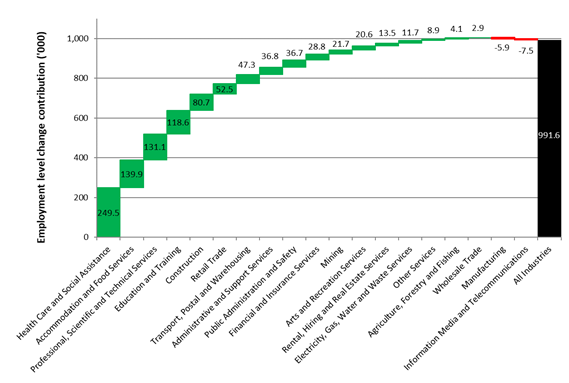
Industry Employment Projections – five years to November 2025
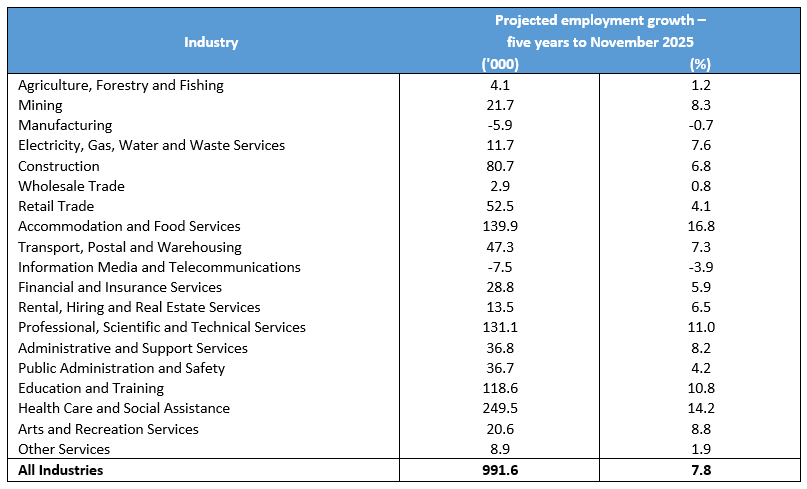
Following the devastating impact of the global pandemic whose aftermath is still affecting some industries more than others, it is also important to take into account occupation resilience when choosing a career path.
The NSC identified the following occupations as the top 20 resilient occupations:
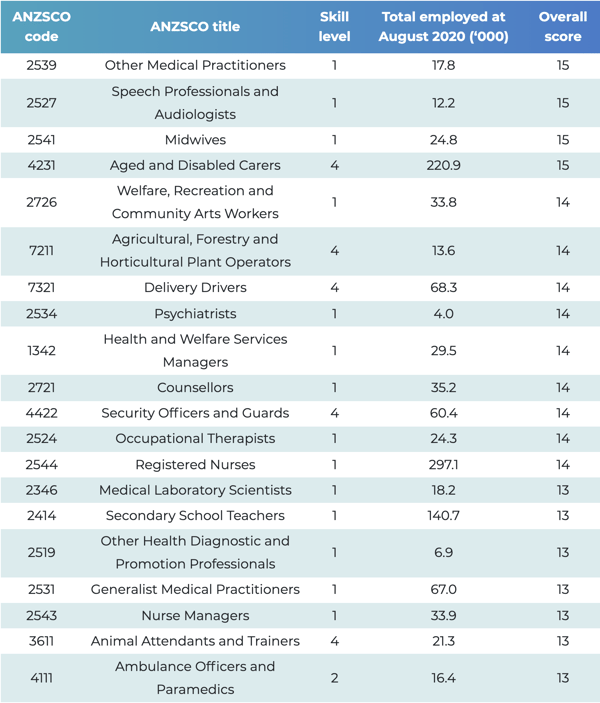
More information on occupation resilience can be found here. You might also want to get some information on rebounding occupations which can be found here.
If you want to take your long-term vision even further and tailor your career exploration to future demands, take a look at these 25 Emerging Occupations which are currently conquering the job market.
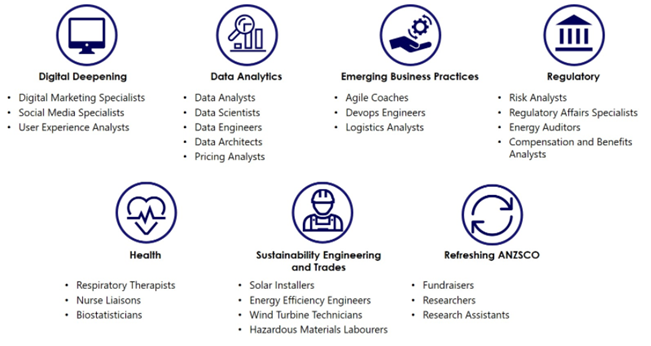
Hopefully, you will now have a better understanding of the Australian job market and its abundance of opportunities. Keep an eye out for job market trends and stay tuned to governmental updates.
READYourself: Identify one or more industries to target for your career mapping and explore these further.
Phase 2: Explore your Opportunities & Employability
Now it’s time to narrow down our scope and focus on your purpose, potential career paths and employability skills.
a) Identifying your Purpose
READYourself: Let’s start with a short reelection activity to determine your purpose.
Take a piece of paper and draw four equal-sized circles overlapping each other. After that, write in the first circle things that you love doing (Passion). Next, write in the second circle things you are good at (Vocation). Then, use the third circle to gather ideas for things that help others or that the world needs (Mission). Use the last circle for activities that you can get paid for (Profession).
You should have a mind map similar to this one:
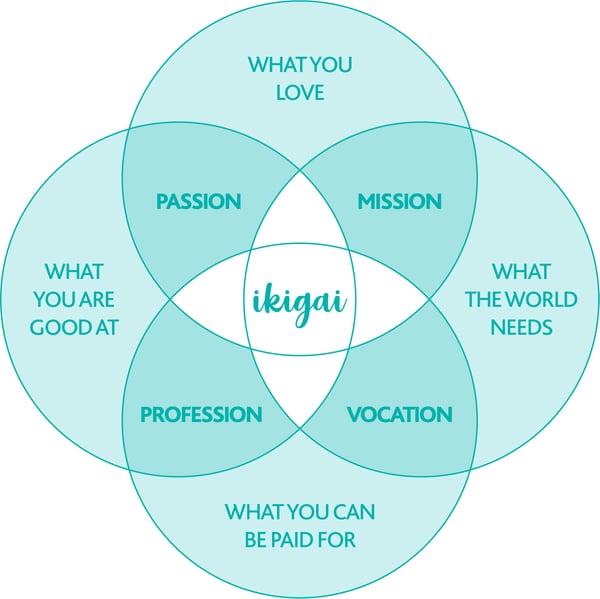
Now, try to reflect on how you might be able to combine the ideas in the four circles to define your purpose - the reason why you get up every morning.
Why is it important to frame one’s purpose? It is suggested that defining our purpose provides the answers to our ‘WHYs’ and thus gives our life journey direction and meaning. It is similar to a compass that helps us stay on course when we feel lost or get off track. It will help you to refrain from discouragement and stay motivated and focused.
So whether you are at the start of the career ladder or in the middle of transitioning, defining and knowing your purpose is the right step forward. For more information and reflective activities, click here.
b) Creating Urgency
READYourself: With your purpose in mind, let’s now do another reflective activity before we get down to business.
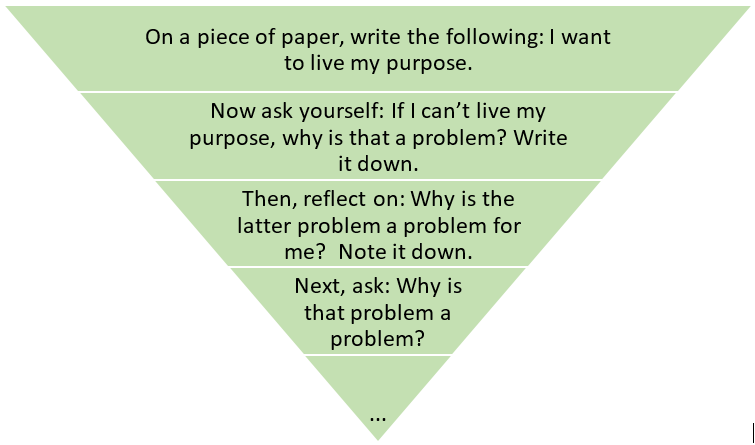
You can continue with this activity for as long as you would like, but let’s shift our focus now.
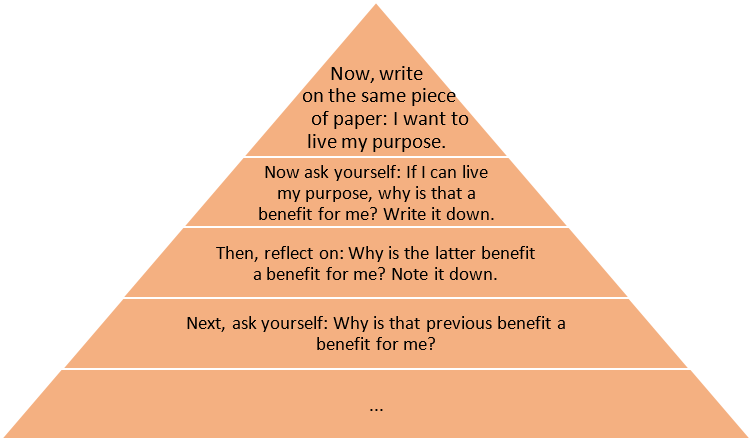
We can continue with this activity forever. The main conclusion to draw from this is the following: We need to create urgency or reason so that we can really focus on our purpose.
This will motivate us to become and remain proactive about our choices. Keep this piece of paper with you at all times to remind yourself every day of why you are doing what you are doing. Let’s now start mapping.
In order to initiate your career road map, it is vital to first identify certain paths. The following two subsections will help you identify certain occupations and their corresponding educational pathways, or vice versa.
Both sections can therefore be used interchangeably depending on how certain you are about your career path at this point. Since you have already decided to do your current diploma, let’s start by looking at how to find information on different VET courses and their linked career pathways.
a) Courses
It is important to know exactly what a specific qualification enables you to achieve as a graduate outcome but also which career path the course in question is part of or linked to.
Your first point of reference is obviously the Work Ready Education website which offers an in-depth profile of each Diploma course including graduate outcomes, industry insights, pathways and much more.
If you would like to find out more about courses and the corresponding occupations and pathways, please consult the following websites: MyFuture, Training, MySkills. You can also consult this governmental report to see VET course student outcomes and ratings from 2020.
b) Occupations and Industries
Now, let’s look at your career path options from an occupational angle. Choosing a specific profession is not an easy task and requires you to do quite a bit of research.
If you already know what kind of occupation you want to focus on, you can verify your choice by visiting the following websites, which will give you detailed information on areas such as training, salary, educational and career pathways, industry-specific data and much more: AAPathways, MyFuture, Training, JobOutlook, MySkills, Your Career, National Skills Commision, Seek Jobs, Industry Insights and Payscale. Here again, you may wish to consult the IMP Vacancy Report, the 2020 Employment Projections and the Report on VET course student outcomes and ratings from 2020. Another interesting reference point is the Hays Salary Guide which provides useful information on salaries for different occupations and locations.
If you really feel stuck and need a bit of inspiration, have a look at the following two tools where you have to answer a few questions in order to receive suggested career options: Career Tool and Career Quiz. Another great tool is the Career Bullseyes tool, where, based on a specific area of interest you select, you will be given a selection of occupations related to that area within different skills levels.
Starting early to identify your career aspirations is an integral part of your journey as this will help you build upon necessary skills and knowledge which, in the end, will make you more employable. A great way to get you started on mapping out your future career is to create a career plan.
READYourself: Use the following career planning tools to start your road map:
This brings us to the core of your preparation phase: YOUR SKILLS. A lot of conventions change over time when it comes to recruitment and employability but as Ian Powell, Chairman and Senior Partner of PWC UK LLP expressed: “The DNA of the business is still the same – the best people with the right blend of skills drive us to be number one.”
And adding emphasis to this, Charles Macleod, Talent Leader at PWC UK LLP said quite rightly: “Academic study gets your foot in the door, employability skills push it open to a far wider range of opportunities.”
So what are employability skills? And what are other essential skills?
In simple terms, employability skills are skills required for success in the labour market at all employment levels and for all sectors. Essentially, in addition to your formal training and educational background, this is exactly what employers are looking for.
While some of these skills might be rather generic, others really differentiate you from the crowd and that’s why it is so important to really define and extract your personal skills set that makes you stand out from the crowd.
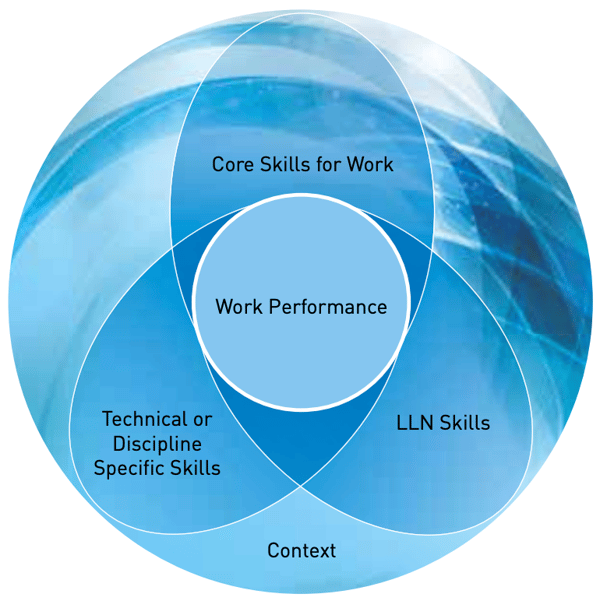
There are many employability skills lists but a common reference is the Core Skills for Work Developmental Framework (CSfW) which has identified 4 key areas that Australian employers and industries regard as important in order to gain and maintain employment:
- Non-technical skills (generic or employability skills)
- Technical or discipline-specific skills
- Core language, literacy and numeracy (LLN) skills
- Context of skills application.
These skill areas encompass 10 skills which are further grouped under three skill clusters:

This is to show you how skills can influence your performance, how they are interlinked and which areas you might have to develop further still. Let’s have a look at specific examples. For the purpose of this guide, we will only focus on technical skills, and non-technical skills.
a) Technical or discipline-specific skills
This skills set is often referred to as ‘hard skills’ and is usually gained through more formal education and/or training. Since these skills are learnt and can therefore be proven and actively demonstrated, they are more easily measurable for potential employers. In a nutshell, these skills describe a person’s ability to do a specific task.
Some of the most sought-after hard skills include:
- Administration
- Coaching
- Communication & interpersonal skills
- Customer service & acquisition
- IT
- Language skills
- Marketing skills including presentation techniques
- Software skills & development such as MS Office, Photoshop, content management systems & SEO tools
- Patent law expertise
- Research
- Server operation
- Tax accounting
- Text creation skills & editing
- Translation
- Typing speed & techniques, and many more. For more detailed information, click here.
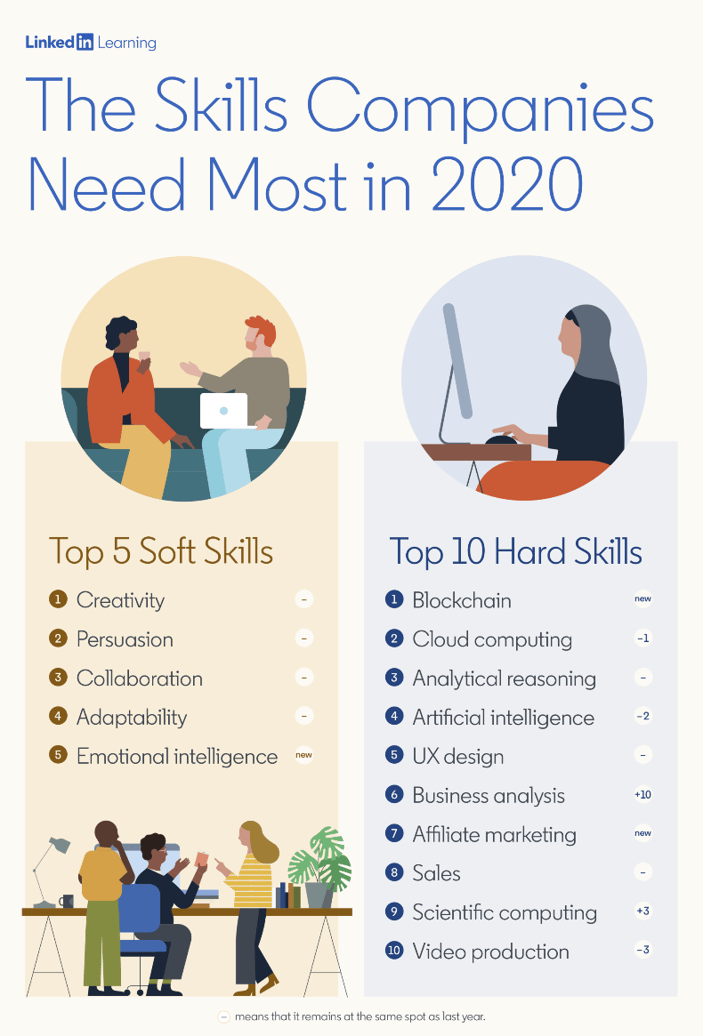
In addition to the above skills, LinkedIn revealed a list of the most-in-demand hard skills in 2020. Watch out for these:
- Change management
- Corporate management
- Data analysis and data interpretation
- Digital expertise
- Knowledge management
- Programming skills
- Project management
- Social media knowledge
Your personal hard skills set enables you to get through the very first step of the application process as the company uses it as a means of assessment for job profile fit and even specialization.
An applicant with knowledge of several programming languages, for example, could be considered for a role as a programmer. Speaking various languages could imply good communication skills and possibly some translation skills.
How can you communicate your hard skills toolbox?
The first step would be to list your hard skills in order of relevance to the job advertisement in question. You will then decide which of these you want to highlight in your cover letter, and which ones to mention in your resume. In the resume, these skills would often appear under the ‘education’ and ‘training’ section in order to establish a link between your career and hard skills.
Other skills not falling into these categories could be listed at the end of your resume under a separate section entitled ‘skills’. The cover letter, on the other hand, would then include your most important skills that are mentioned as the main requirements of the job advertisement.
b) Non-technical skills
Let’s have a look now at the other end of the spectrum: your ‘soft skills’, often referred to as employability skills.
In an interview, potential employers usually ask you a number of questions related to your character or personality. The skills that are being sought after here are so-called non-technical or soft skills. These skills are generally not certified and/or measurable, and relate more to qualities or your character traits, which is why it is difficult to verify these types of skills. They assess the way a person deals with tasks and how they function in a work environment. Choosing your non-technical skills wisely is an important part of your preparation since these skills are usually transferable across industries and roles.
These skills set usually provides answers to the following three questions: How do you work as an independent individual? How do you function as part of a social setting? How do you manage challenges and complications? Based on these questions, soft skills can therefore be categorized into 3 main areas: personal skills, social skills and methodical skills.
Examples include the following non-exhaustive list:
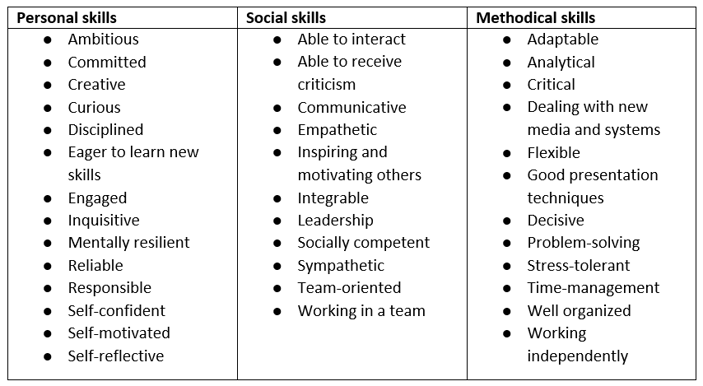
For more details, click here.
Here again, LinkedIn revealed a list of the most-in-demand soft skills in 2020. Watch out for these:
- Creativity
- Persuasion
- Collaboration
- Adaptability
- Emotional intelligence
Your personal soft skills set enables you to stand out from the crowd in the final stages of the application process, mainly after all potential candidates have been interviewed. It is essential to choose your soft skills wisely as, to a certain extent, they can make up for a lack of hard skills.
For more information on soft skills rankings, go to this link.
How can you communicate your soft skills toolbox?
Soft skills are more difficult to communicate as they require a story to be explained. However, there are indeed various ways you can implicitly show your soft skills, mainly in your cover letter. You can show your creative side by choosing an original design. Having worked while studying or vice versa points to high stress-resilience and self-discipline. Volunteering or community work implies social competence and self-motivation.
In addition, you might want to include relevant hobbies and interests in your resume. Team sports, for example, demonstrate team spirit and seeking a healthy work-life balance while an interest in strategy games implies problem-solving skills.
As you can see, there is a lot to your skills set. Both categories of skills have to be well-chosen, well-defined and linked with each other since they make you the professional person you truly are. For more industry-insights, please consult the following PWC Report.
Whichever hard and soft skills you mention in your job application process, ensure that:
- your written communication (emails, reports, letters etc) is clear, concise, proofread and organized.
- your skills set distinguishes you and highlights that you possess skills that cannot be replicated by automation such as problem-solving, initiative, creativity and analytical skills.
- you include any extra-curricular activities such as volunteering, community work, club and society memberships etc, to show that you truly are a good, self-motivated and team-spirited individual
- you have a potential plan of action for skill areas in which you require further development.
Moreover, remember to always be prepared in an interview to tell a story about your skills and link them to a relevant past experience. This will enable you to provide evidence and make you more convincing. A good approach could be either the:
IDEAL model
I = Identify the problem.
D = Define and represent the problem.
E = Explore possible strategies.
A = Act on the strategies.
L = Look back and evaluate the effects of your activities.
or the
STAR model
S = Situation
T = Task
A = Action
R = Result
READYourself: Now, let’s tailor the employability framework to your career road map. The following tools will enable you to identify or define your goals, explore your strengths and weaknesses, and help you establish a plan of action.
- Start by creating a career profile: MyFuture.
- In the next step, use the EmployABILITY assessment tool to create a personalized employability profile report.
- Complete this Employability Self-Assessment (p. 18-19) or
- Use these PWC ‘How To Improve Employability’ activities.
READYourself: Skills Transfer
Find a job advertisement that is relevant to your chosen field/occupation and deconstruct it in order to identify the key employability skills, knowledge, experience and other requirements. Write all relevant requirements in the first column in the table below.
Then, in the second column, address each of the selection criteria by relating them to your past experience. This process is called skills transfer and enables you to identify requirements that you fulfill and others that you do not ‘formally’ satisfy. For the latter, try to identify past experience that involved similar skills and/or qualifications.
Skills Transfer Table
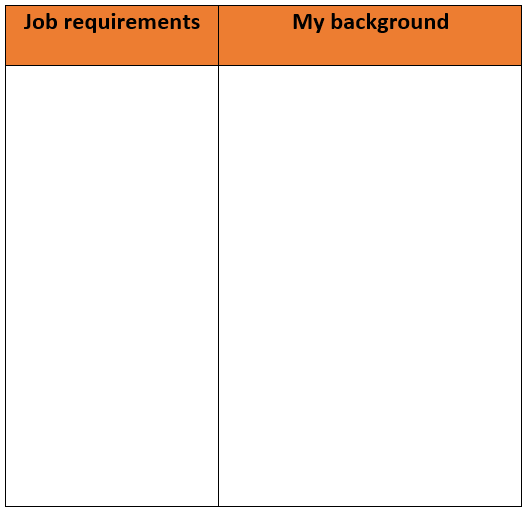
A final word on development. As job market demands are constantly evolving, so should your skills set. Try to seek out opportunities to build upon your skills through part-time work (Seek, Indeed), internships (Seek, Internships, Gradconnection), work-integrated learning, volunteering (Seek, Volunteering Australia, Go Volunteer), Community Work and Employability Skills Courses.
Wherever you are on your journey, whatever you will do from here on: KEEP YOURSELF READY!
Here are some stats to get you thinking more about guiding your skills development.
For more information and case studies, click here.
Phase 3: Activate your Job Search
Now that we have laid the path towards your career destination, let’s see how we can find recruitment opportunities.
It is important to be aware of industry-specific conventions.
Prime application periods follow the academic calendar and are between February and April, and July and August. It might also be useful to check out the yearly career fairs and events such as the Year 13 Expo,Online Career Events, Eventbrite and Jobfairs.
Another possibility is to join specific Industry or Professional Associations and professional groups on social media such as Meetup. Such groups and events give you the opportunity to mingle with employers and recruiters, and to find out about skills in demand and upcoming opportunities.
Now, let’s have a look at some popular search engines. It is important to know where potential employers in your industry commonly advertise job openings.
The most common nationwide search engines in Australia include but are not limited to:
- Arts industry: ArtsHub
- Community, environmental, non-profit and social work: EthicalJobs, JobSeeker
- Government: APS
- Graduate jobs: GradConnection
- Hair and beauty industry: SalonStaff
- Higher Education: TheUniJobs
- Part-time and casual work: OneShift
- Recruitment industry: Careers In Recruitment
- Sports industry: Sports People
- Telecoms, computer, IT, engineering, sales, finance, and healthcare: JobServe
- Gumtree
- Local council websites
- Local job boards and Facebook groups
Whichever search engine(s) you opt for, make sure you familiarize yourself with the different functionalities these offer and sign up for job alerts.
If still in doubt, go to the Learn How To Become website for a quick overview of the main search engines.
Another option to find jobs is to make use of a recruitment agency.
Popular agencies include:
You might think that your exploration of employment channels ends here, but you should not underestimate the opportunities that await you in the hidden job market. In fact, it is estimated that around 75%of all vacancies are not advertised.
This is the world of head hunting, word-of-mouth referrals, and other behaviours such as cold-calling. Because of its ever-increasing importance, it is essential to understand and navigate the hidden market to your advantage.
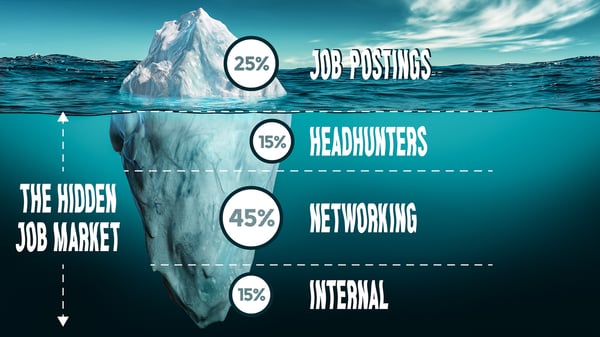
a) Cold-calling
One option following some job searches on the websites above is to create a list of potential companies and their competitors, and then try the cold-calling method, which means to speculatively contact a potential company directly in order to find out about unadvertised job openings and the corresponding requirements.
If you are planning to contact the company via phone, which makes a great first impression, it is advisable to prepare a script in advance as recruiters are generally very busy and you will have to be short and concise.
Here is a template that you could use:
-
Introduce yourself
-
Ask to speak to the person in charge of recruitment
-
Explain the purpose of your call specifying the desired role
-
Explain briefly why you want to work for this specific employer
-
Outline your skills and experience
-
Enquire about application procedures and/or ask to have your details kept on record
However, given the fact that companies might not always be looking for new staff or simply do not know you yet, you might encounter a lot of rejection initially. This is where your network comes in handy.
b) Networking
It is always a good idea to reach out to your network of personal and professional contacts such as friends, family and colleagues. Word-of-mouth is still one of the most powerful tools, and being referred to a specific person has the advantage of an initial personal connection.
Think about who you know that could potentially know someone who could guide you in the right direction. In addition, you could expand your network by organizing frequent discussion groups, joining professional associations and community projects, and attending professional networking events as mentioned in phase 3, subsection 1.
On top of exploring new opportunities, networking will enable you to practice and enhance your communication and presentation skills while expanding your industry knowledge. Whichever way you are going to build your network: Make a ‘Desired Outcome’ plan prior to networking, think about how you can add valuable contributions to your network and always follow up. It’s all about mutual giving and taking. For more information, click here.
READYourself:Consult some of the websites above and try to find a specific job advertisement that you would like to apply to.
Phase 4: Design your Brand
Now that you have defined the pillars of your brand profile, let’s transform this image into your professional brand components to get you ready for the job application process.
The job application process can be very time-consuming initially but once you have created your branding components, it will get much easier to apply for different roles. The job application process usually involves your resume, your cover letter and one or several job interview rounds. A quick word on expectations.

First and foremost, be patient. When preparing your job application, make sure to take the time to demonstrate enhanced yet original written (including proofreading) and verbal communication skills. Tailor every aspect of your application to the specific job advertisement and avoid generic applications. Be concise but always support your case with references to past experiences in order to support your ‘brand promise’. Also, be realistic.
Depending on your experience, be prepared to start at the lower end of the career ladder within roles that might be of a casual or part-time nature. Are you ready? Let’s get to the core of this guide and design your personal brand.
The very first aspect to consider when designing your brand is creating a resume. Your resume is like a biography, a record of everything you have done that is relevant to a specific job. It tells a short story about your mission and aspirations and lists your qualifications, skills, and previous and current work experience.
The main purpose of your resume is to sell yourself and your abilities so that the potential employer moves to the next step of inviting you for an interview. In a nutshell, it is like an advertisement that targets a potential employer. The key here is persuasion and personal brand expression. But how? By satisfying the job requirements through content and style.
Let’s start by exploring the Structure and Content of resumes. You can use this template as a guide. The 3 top sectionsare made up of your brand logo and your personal USPs.
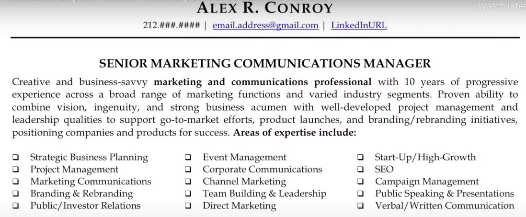
1. Your Contact Details
Include your full name at the top centre in large font followed below by your phone number, email and postal address, personal website, LinkedIn URL and professional registration numbers.
WhatNOTto include: DOB, marital status, health, religion or photograph.
2. Your Mission Statement or Personal Statement
This section provides a summary of your personalized professional brand and highlights your industry experience including the number of years, 3 to 4 attributes, your overall aspirations (passion) and current mission (target job).
It is generally written in full sentences and in third person, and should not be longer than 5 lines. The main questions to answer here are: Why should they hire you? Why are you qualified? What can you provide?
3. Summary of your Core Skills
List your core technical and non-technical skills (areas of expertise) in bullet point format.
The body sections of your resume all relate to your past and most recent educational and professional background.
4. Depending on your expertise either continue with*
a) Your Educational Background
Title or degree (in bold)
- dates - institution - location
- main subjects
- achievements
Leave out secondary education unless you have just recently completed high school.
or
b) Your Professional Experience and accredited qualifications
Job title (in bold)
- employer – dates – location
- responsibilities (use -ing form or past tense)
- achievements (for the last two jobs)
Try to show results and list the corresponding skills involved. Avoid repetition and show progression by adding longer task lists to your most recent roles.
*Both sections should be listed in reverse chronological order, starting with the most recent.
5. Your Professional Development
In this section, list anything that is related to your relevant areas of expertise such as training courses, conferences, seminars and workshops.
6. Skills and Accomplishments
Focus here on your transferable skills, achievements and areas of expertise supported by specific evidence.
7. Certifications and professional affiliations
This section should list any professional memberships and certifications such as WWCC, blue card, first aid certificate, licenses, police checks, security clearances and yellow card.
___________________________________________
The last two sections focus on additional activities outside your work life, and your references.
8. Volunteering and other extra-curricular activities
Use this section to show your commitment and team spirit by listing any volunteering and community projects as well as any hobbies and interests that demonstrate proven skills and a healthy work-life balance. Mention key responsibilities and outcomes.
9. References
Unless clearly stated in the job requirements, avoid mentioning referees on your resume and instead use the following phrase: References are available upon request. If you do include references, ask the referee for prior permission and then include their full name, position, relationship to you and contact details. It is wise to choose someone who is well-written and well-spoken and who can confirm aspects that make you the ideal employee.
___________________________________________
Now that we have established the structure and contents of your resume, let’s have a look at the generalStyle Conventionsof resume writing. Here, we will be looking at the formal presentation, including format and language.
Why does style matter? Think of an advertisement that really attracted your attention. The content was most certainly important but what probably really made it memorable was its design and catchy language.
Similarly, the style of your resume shows the potential employer your personality but also how you organize and logically link your ideas. So the key here is ‘easy’: Keep it easy to read, easy to follow and easy to process.
Your resume should be 2 - 3 pages in length for professional jobs, and 1 - 2 pages for casual jobs, and should have your name and phone number on each page. There are numerous templates you can choose from or you can simply create your own. Choose a style that reflects your personal brand including appropriate colour palette, and avoid using too many images. You might also want to check the company’s website to see if you can incorporate their design but do not let it undermine your own brand.
Separate your sections using bold headers and choose a consistent easy-to-read font such as Calibri, Arial or Times New Roman. For your name and headers, use a font size of 13–16, and a font size of 11–12 for the other parts. Highlight your qualifications, job roles and other core selling points in bold. Useitalicsfor company names, organizations and institutions.
As a general rule, your resume is mainly presented in short-phrased bullet points. Only your statement section (2) is written in full sentences. In terms of your language, keep it direct and clear, yet concise and catchy. Regarding your skills and expertise, it is advisable to use a variety of action verbs. Here are some examples that render confidence in specific skills areas:
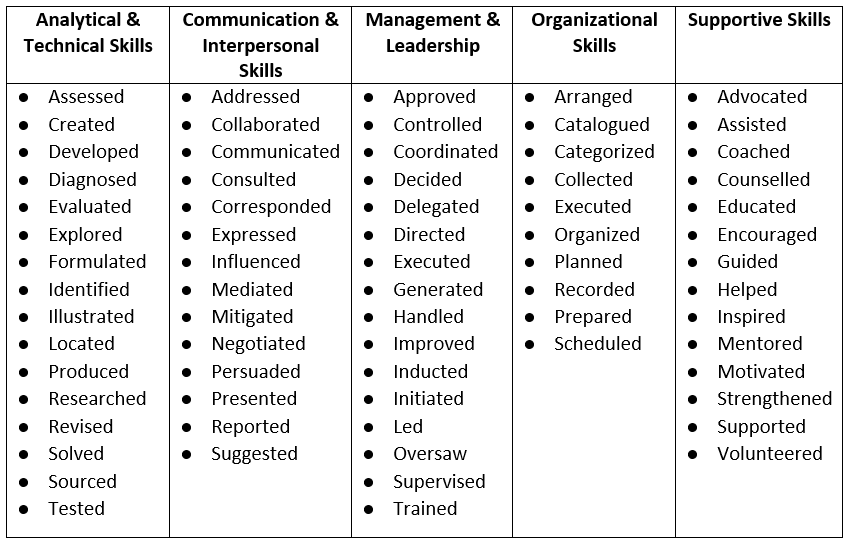
Some final tips
-
Ensure that your resume reflects all the job requirements.
-
Be clever about dates: for a job role, instead of writing 10/2019 - 2/2020, write 2019 – 2020.
-
Avoid using abbreviations or contractions (e.g. don’t).
-
Avoid translating official titles; instead, explain or paraphrase these, or add the official translation in brackets.
-
Always send your resume as a PDF file and entitle it with your name.
-
Keep your resume up-to-date.
-
It is always a good idea to look at other industry-related resumes. Simply google: best CV for + profession to get an idea of what employers are looking for. You could also have a look at My Perfect Resume or Resume Now.
-
Never forget to proofread your resume before sending it, and get someone else to read it too. Attention to detail is the key and should be a skill that is reflected in your resume too. Remember that companies are not necessarily trying to find someone but to disqualify applicants. So you need to ensure that your formatting and spacing is consistent throughout, and avoid page breaks in the middle of sections.
-
Finish off your resume with a personal inspirational touch by adding one of your favourite quotes.
On a final note, remember that your resume is like the first meeting with a person you do not know (well) yet. So first impressions do count. And how long does it take to make a first impression?
7 seconds maximum.
7 seconds to persuade the potential employer to read the rest of your resume.
READYourself: Now it is your turn, start compiling your resume following these steps:
- Refer back to your skills transfer table and add supporting evidence.
- Draw up a reversed timeline for your education, work experience and all other components of your main body.
- List all your certifications, skills, volunteer activities, hobbies and interests
- Choose a template (Google, ResumeNow, MyPerfectResume, LinkedIn or LinkedIn Recommendations, Seek) or create your own layout.
- Target your resume to the specific job advertisement and single out additional criteria from similar job advertisements.
- Now, cross-examine these criteria against what is reflected in your resume.
- Proofread and get other people’s opinions.
Before clicking the send button, ask yourself: If I were an employer, would I hire myself?
If not, why not? – make the corresponding changes.
If yes, you are READY to save and move on to your second essential brand document: Your cover letter.
Your cover letter is probably the most important branding tool since it is usually the first point of contact with your prospective employer. Certainly, your resume might be at times examined first but in most cases, your cover letter will be read first and thus, will really make a difference in you being selected for an interview.
Are you confused as to why the cover letter is mentioned here as the second component? The reason for this resides in the fact that it always makes sense to first create the framework of your entire body (resume), and then complement it with soul and personality through a written sales pitch that communicates who you truly are and what differentiates you from others. In addition, it is a great tool to demonstrate your communication skills.
Therefore, while your resume provides an overall record of your job-relevant brand biography, your cover letter summarizes this biography in a journalistic or story-telling manner showcasing your brand’s core values and benefits taking the recruiter on a journey through the highlights of your most valuable skills and past experience.
Let’s have a look at the main differences between your resume and your cover letter.
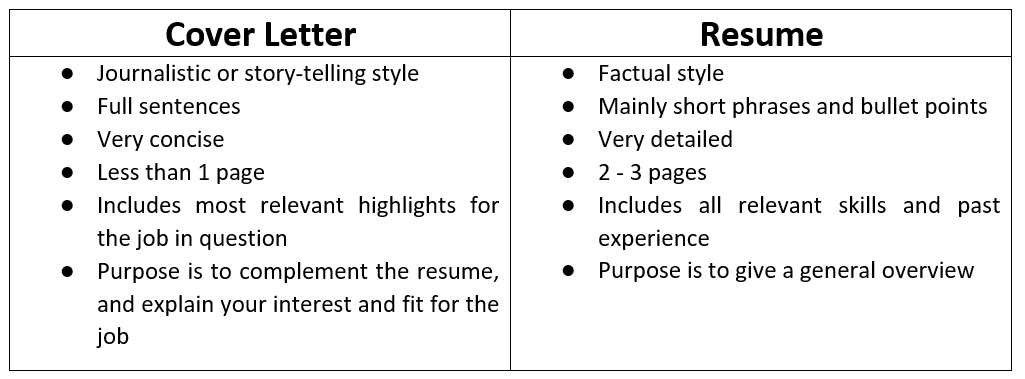
Now that we have established the main differences between both documents, let’s have a look at what makes an outstanding cover letter. Here again, you are trying to sell your brand throughcontentandstyle.
But just before you start, remember:
- Update your resume
- Research the target company (mission, customers, values, history etc.)
- Analyze the job advertisement.
Then, let’s start by exploring the Structure and Content of cover letters. You can use this template as a guide. The cover letter can be broadly divided into:
-
Header
-
Opening salutation
-
Introduction
-
Body
-
Closing
-
Closing salutation
1. Header
This section starts on the top left of your cover letter stating first your address, followed below by the date, then the contact person’s details and further down the reference to the job advertisement. For the contact person’s name, try to find out their full name. If, after some research, you cannot find the addressee’s name, stick to ‘Hiring Manager’.
2. Opening Salutation
If you know your contact person’s name, address them directly using their first and last name, for example ‘Dear Ben Thompson’. If you do not know their name, simply greet them with ‘Dear Hiring Manager’.
3. Introduction
The introduction is probably one of the most important sections of your cover letter since its intention is to grasp the recruiter’s attention and urge them to continue reading. There are different components that make a catchy introduction. Have a look at the following approaches:
-
Instantly stamp your brand. State your job title and explain your role and achievements.
-
Show excitement for this job opening. Express how much of a great opportunity you see in this.
-
Use keywords from the job advertisement:Refer here to your strongest areas of expertise, years of industry experience, and skills in different areas concluding that you are the best candidate for the role.
-
Refer to current news. Show your knowledge and interest, and explain the link between the news item and your expertise.
-
Show your connections.If you’ve been referred by someone, use this to your advantage as a point of reference for the recruiter mentioning the referee’s name and position.
In a nutshell, introduce yourself, explain your current job situation, and enthusiastically state the purpose of your letter including your mission and the job opening you are interested in, including details on where and when you saw the job advertisement, unless you were recommended by someone.
___________________________________________
Now that you have introduced yourself and shown your enthusiasm, it is time to establish a strong bond between your brand and the role and company in question.
4. Main body 1: Your Brand Origin
Explain here the origin of your current career (e.g. childhood connection) and how you have been following this pathway through education, training and professional experience, thus making you the ideal candidate. Show the recruiter how you have evolved over the years and thus gained extensive industry expertise, mainly referring to technical skills acquired or exposed to.
5. Main Body 2: Your Brand Benefits and Brand-Job Link
In this section, demonstrate further your focus on and knowledge of the main aspects mentioned in the job description referring to your most relevant non-technical skills and past accomplishments (remember to use the STAR and IDEAL formula).
At this point, you really need to tell them why they should choose you and that you are READY for the position by highlighting your 2 - 3 most compelling USPs from your resume illustrating these in more detail. Finish off by linking your skills set with the position in question thus really expressing why you want this job and how you can contribute to the company’s success.
6. Main Body 3: Your Brand-Company Link
Communicate here why you want to work for this particular company explaining why the job and sector appeal to you and show passion for these. Here, you need to demonstrate a strong link between the company’s philosophy and CSR, and your core values.
___________________________________________
7. Closing
This brings us to the end of your cover letter. This is your final chance to clarify any ambiguities, refer to your attached resume and urge action. State your availability for an interview and provide your contact details. Most importantly, thank the recruiter for their time and consideration, and wish them the best of luck with the current recruitment process.
8. Closing Salutation
Finish off with a friendly yet formal closing such as Yours sincerely, Kind regards or Yours respectfully followed by your full name.
___________________________________________
Some things to remember throughout:
-
Always address the selection criteria from the job advertisement; these are usually listed in the order of importance.
-
If you lack expertise for certain selection criteria, state that you have the capability of acquiring such knowledge or skills.
-
When referring to your skills, make sure to highlight how you contributed to the success of previous projects etc within that area and describe what generally makes your skills effective.
-
Recruitment processes are usually initiated with a scanning process: If, during the scanning, the right keywords (selection criteria) can be detected by the recruiter, your application will be given further consideration.
Now that we have established the structure and contents of your cover letter, let’s have a look at the generalStyle Conventionsof cover letter writing. Here, we will be looking at formal presentation including formatting and language.
Here again, it is important that your layout and writing style are in line with your personal brand and complement your resume. Let’s start with the basics.
As mentioned before, your cover letter should be 1 pagein length and should be clearly divided into paragraphs with appropriate spacing between each section. It is essential that you use a simple font, preferably the same type and size as in your resume, since many companies use applicant tracking systems software which might not be able to read certain fonts. Your text should be aligned to the left and in block format.
Moving on to language, always ensure a positive tone and express your enthusiasm,ambition and confidence throughout. Use an original journalistic or story-telling style, a variety of action verbs and simple yet professional language. Your text should have a logical flow and is preferably kept short and concise.
Some final tips
-
Ensure that your cover letter addresses the selection criteria.
-
Remember that it is not about what you want from the company, it is about what you can provide in order to contribute to the company’s success.
-
Use direct language and avoid long sentences and fancy words.
-
Avoid slang, informal language and contractions.
-
Be engaging, and use a personal and original written communication style.
-
Never forget to proofread your cover letter before sending and get someone else to read it, too.
-
Always send your cover letter as a PDF file and entitle it with your name.
On a final note, remember that your cover letter is like a first interpersonal contact; it is an exchange. Strike a balance between talking about yourself and how your skills can benefit the company. Avoid overusing the personal pronouns ‘I’ and ‘me’.
READYourself: Now it is your turn, start compiling your cover letter following these steps:
- Refer back to the job advertisement that you chose and try to single out all selection criteria in order of importance and essential keywords.
- Now, refer back to your resume and match the selection criteria with the corresponding experience matches and evidence.
- Using the previously mentioned template, try to add bullet-pointed ideas to each section.
- Once more, cross-examine the criteria against what is reflected in your cover letter.
- Now it’s time to wrap it all up in a persuasive, catchy story.
- Proofread and get other people’s opinions.
Before clicking the send button, ask yourself: If I were an employer, would I hire myself?
If not, why not? – make the corresponding changes.
If yes, you are READY to press the send button and move on to preparing for your verbal brand pitch: Your job interview.
If you want to find out more, click here.
So you have been successful in landing an opportunity for a job interview. This is your time to shine and pitch your brand. So what does this process entail?
The interview process involves 3 stages:
-
Pre-interview
-
Interview day
-
Post-Interview.
Each stage requires a high sense of attention to detail and we will now look at each of them.
1. Pre-interview Stage
This stage involves the recruiter’s invitation and/or a request for more information, the mutual confirmation of the interview appointment and preparation of supportive documents such as your portfolio and business card, and more in-depth research about the interview appointment details such as date, time and location, and the company such as the company’s website, in particular the history and mission statement, annual reports and media presence.
Next, reflect on the type of interview you are going to be faced with. Here, you should consider the mode, number of interviewers and interviewees, and the context.
Ensure you are familiar with these aspects so you can prepare yourself accordingly.
Another aspect of this stage is the preparation of responses to interview questions and beyond. Generally speaking, these questions fall into 4 different categories:
-
Questions related to your resume, for example your past professional experience
-
Questions related to your behavior, for example how you address challenges
-
Questions related to your fit, for example selection criteria and the company culture
-
Questions related to specific scenarios, for example hypothetical situations, dealing with work issues or testing your technical and problem-solving skills
Hence, there are a whole variety of questions you could be asked but you can most certainly expect 8 common interview questions. Prepare your answers to these ensuring they are very thoroughly backed with supporting evidence from your past experience.
-
Tell me about yourself.
-
Why should we recruit you?
-
What do you know about our company?
-
Why do you want to work here?
- What are your weaknesses?
- Why did you leave your last job?
- Where do you see yourself in five/ten years from now?
- Do you have any questions you would like to ask us?
- What are your best and worst character traits?
- What did you like and dislike about your last job?
- Tell us about a difficult situation in the past and how you overcame or solved the issue?
- How do you deal with stressful situations?
- How do you deal with difficult personalities in your work environment?
- What are your ultimate goals?
- How do you interact with different stakeholders?
- What would you do in a situation where…?
- Why do you want to change jobs?
- How can you contribute to the success of our company?
Whichever question you might be faced with, the key is to always say good things about and find a positive note to end with in everything you mention.
READYourself: Over to you: Look at the questions above and write effective, positive and truthful responses for each of them. Then practice articulating these verbally in a natural and confident manner.
___________________________________________
2. Interview Day Stage
This brings us to the big day: Your interview appointment. This stage involves your arrival and welcome, the interview itself and your departure.Make sure to dress appropriately; the way you dress determines for many recruiters in just 90 seconds whether they will hire you or not. In fact, it is estimated that it takes 1/10 of a second to form a first impression. So stick with the recommended rules: no fancy or bright colours and accessories, and not too much make-up and/or perfume. Keep it simple yet professional; a conservative blue or black is generally advisable.
Once you are readily dressed and equipped with your supporting documentation, ensure you arrive early in order to take in the company’s work atmosphere and to greet and make conversation with everyone in a confident yet friendly manner.
The key throughout your interview day is your non-verbal communication. Be positive, smile, shake hands firmly, keep good eye contact, watch your posture, facial expressions and proximity, and give the impression that you are happy to be there by showing the best of your energy, enthusiasm and genuine interest.
When it comes to the actual interview, answer the recruiter’s questions directly supported with examples and keep the conversation flowing. Try to think of conversation starters that could be of shared interest so as to build chemistry. During your conversation, bear in mind your verbal communication, that is: intonation, pace, volume, tone, register, language. Avoid mumbling, stuttering, long periods of silence, interruptions and ‘umming’.
And never forget to ask questions to show interest in the job, the company, but also the person you are talking with.
- What are your future plans for growth and development?
- Does the company support ongoing learning and training for employees to stay up-to-date in their positions?
- What sort of opportunities are there for advancement within the company?
- What do you like about working here?
- How do you think I performed in the interview?
- What is the next stage of the recruitment process?
- How should you follow up?
- What is the timeline for making a final decision?
- Who should I follow up with?
___________________________________________
3. Post-interview Stage
This brings us to the last stage of your interview process. This process involves sending a thank you note and checking in with the recruiter on the progress of the recruitment process.
Following your interview, send the recruiter an email thanking them for the opportunity and asking for some feedback. Additionally, you might want to send the company a tailored LinkedIn connection request.
While you are waiting for a response on the outcome of the interview, keep up your research into other opportunities. Look at the company’s competitors to see if they are recruiting.
Then, unless specified during the interview, follow up with the interviewer asking where they are at in the recruitment process and whether they can see any reason to be reluctant to hiring you.
Should the position not be offered to you, thank the recruiter anyway and ask for any feedback and potential future considerations. Should you, however, be offered the position, you have indeed nailed it and should enquire about the next steps to be taken.
Some final tips
- Ensure that the conversation has a healthy balance between listening and talking, so do not rush, especially in online or phone interviews.
- Remember to always find something positive even in rather disappointing or negative situations, and never speak poorly of your current or previous employer.
- Never give any false information and if some selection criteria are not within your expertise, admit so but explain that you are willing to expand your knowledge within that area.
More activities:
- Conducting an informal interview with an industry professional.
- Create and deliver a 3-minute presentation which identifies your top 5 character strengths, and shows five images that are personally meaningful and represent each of the identified character traits.
- Me in a minute pitch: Summarize your key skills, knowledge and experience gained during your studies/professional career supported by evidence to show your achievement of at least 3 attributes/capabilities.
- Reflect on a contemporary career issue/topic and suggest strategies and tips to manage and/or overcome the issue.
You might be at a point now, where you have already sent your application, have been invited for an interview, have been rejected or have been offered a job. Nevertheless, wherever you might be along your journey, there is one more component to your personal brand that you need to create and constantly update: Your personal digital brand. No matter which industry you might be working in, the digital era has revolutionized the way we live, work and interact with each other. And there are a lot of hidden opportunities you should never underestimate.The digital world offers you the possibility to connect with people, and establish and grow a professional network, it offers you the possibility to promote your brand and portfolio, and offers you various recruitment channels.
Let’s have a look at designing your brand on social media. We will focus here on one of the most predominant professional social media platforms of digital branding: LinkedIn. The conventions related to LinkedIn hereafter can be used as a reference for other professional platforms.
Why is it important to be on LinkedIn?
- Connections with professionals and industry experts
- Excellent tool to promote your expertise
- Recommendations and listings of job opportunities
- Google search links and major talent sourcing tool for recruiters
- Staying on top of industry trends
- Limitless compared to resumes and cover letters
The LinkedIn Success formula:
- Success through knowledge exchange
- Success through enhanced credibility and expertise
- Success through job search and applications
- Success through networks
So what are the main functionalities?
1. Degree of connections
First-degree connections: This is your immediate network of people you know
Second-degree connections: People linked to your first degree connections
Third Degree connections: People connected to your second-degree connections
2. Netiquette Rules
Accept: Person becomes first-degree connections.
Reply: For prior validation before connecting.
Delete: If the person is unknown to you or you if you do not want to connect.
Archive: If you want to decide at a later stage if you want to connect.
Forward: Forwarding an invitation to another mutual connection.
As you can see, LinkedIn and similar professional platforms offer numerous advantages and functions. What are you waiting for? Let’s start using LinkedIn and build your profile.
How can you use and navigate your LinkedIn profile effectively?
1. Finding a job
- In the top toolbar, click on ‘jobs’.
- Choose a job title within a specific area or industry, and narrow down your search by indicating a location.
- Choose an advertisement and look at the position summary and selection criteria.
2. Finding and adding connections
- In the top search bar field, choose ‘person’. This will show connections and suggestions based on your profile information (e.g. expertise). Then, click on a profile and connect with them.
Another option:
- Click on ‘my network’.
- Choose your desired category from the ‘Manage my network’ options.
3. LinkedIn groups
- Click on ‘my network’.
- Scroll down and look at suggested groups below the individual profiles.
- The suggestions are based on your information (e.g. expertise and location) and your connections.
- In the top search bar field, type an area of interest and choose ‘groups’ under ‘more’. This will show connections and suggestions based on your profile information (e.g. work).
For more tips on how to navigate, click here.
4.Crystalknows
- An app that shows personality traits of LinkedIn profiles enabling improved communication of your brand attributes, and more effective professional exchange and connections.
- Go to the website, set up a free account, install the Chrome plugin, go back to LinkedIn and check that the Chrome extension is available.
- View someone’s profile and click: ‘View personality’
- Conversation Coach: for notes and advice on how to best communicate with the person.
- Comparisons: similarities and differences between you and the other person.
- Overview of character traits including information and advice on communication, motivations, work ethics, dos and don’ts etc.
5. Increasing and maintaining successful digital visibility.
a) Creating posts regularly
- Posts: professional content within your professional network, e.g. on thought leaders’ opinions.
- You can also contribute to discussions on conversation topics that you are following.
- This enables you to promote your professional brand, and enhance its exposure.
- Start small and keep to the point, and refer to what others have been saying.
b) Writing an article
- Once you have practiced a few posts, why not wrap up your ideas in an article?
- Start by dividing it into 3 themes or sections, and do your research.
- As you write your article, always remember your audience; your ultimate goal is to increase your social capital, and then to network with your audience.
Generally speaking, a well-branded LinkedIn profile has the following components:
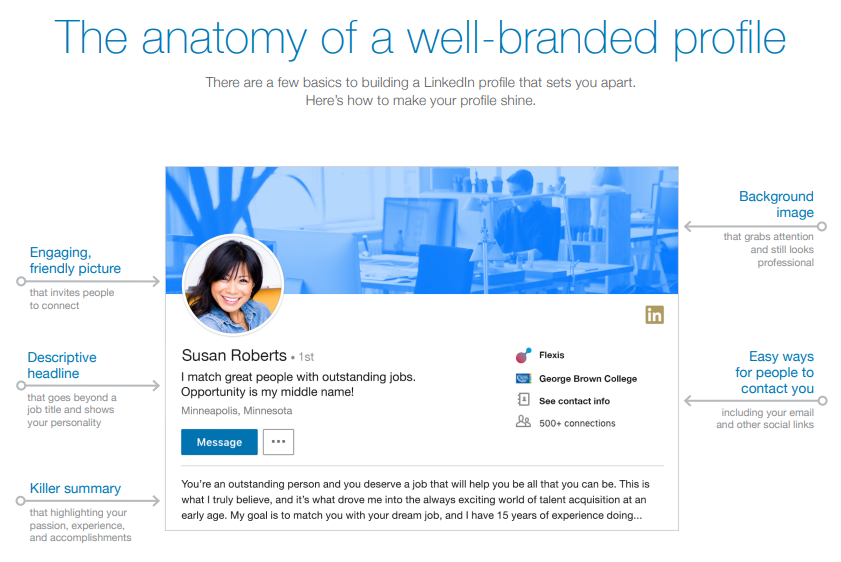
As you can see from the image above, creating a professional profile that reflects your brand follows exactly the same steps as creating a brand for a product.
Let’s start with the most essential component:
Giving your brand a face: Your photo
- Choose a professional photograph that depicts you as an approachable and friendly person with a captivating facial expression.
- The advantage of a profile picture? 21 times more views and 9 times more connection requests.
- For your photograph, make sure it is in focus, and has good lighting and a simple background.
- On LinkedIn, use the filter and adjust functions to enhance your photo.
- Save it and verify that it shows you in the most professional way.
- If in doubt, use photofeeler.com:
- Upload your photo and set it as a business photo.
- You can look at the notes that provide useful comments (e.g. too blurry).
- You can also look at the data which includes votes on the grading criteria from other users.For more tips on profile pictures, click here.___________________________________________In combination with your profile picture, the second aspect of making a great first impression is your headline.
The key here is: Be brief but concise, make it your catchy, memorable tagline, make it YOU!
What you really want to communicate here is your mission and impact. So be creative, original and impactful.
___________________________________________Next in line is your effective summary.Use this opportunity to tell your story but avoid being generic and instead, show who you truly are, communicate passion and trust. In brief, urge people to connect with you.This section is all about you, so use the first person, and try to tell a compelling story that takes viewers on a journey through your goals, passions, accomplishments, and your mission.There are various approaches for effective summaries:
- The professional who focuses on skills and expertise.
- The storyteller who creates a vivid picture through detailed storytelling blending their life story and passions with their professional background.
- The creative who keeps everything very brief and to the point, and focuses on lexical aspects and data.
- The comedian who incorporates humor but maintains professionalism at the same time.
- The spirited who is committed to their company, and its mission and philosophy.
Whichever way you choose to tell your story, be yourself and make it yours.
___________________________________________
Now it is time to build credibility through recommendations from others who can attest to your expertise. In fact, such recommendations are the most frequently viewed sections of LinkedIn profiles.
When approaching people on vouching for you, ask them to clearly state and explain your abilities and achievements.
Another key aspect to avoid again is being generic, so ask for your recommendations to be personalized and directly related to you and your work ethics.
___________________________________________
Next, add more substance to your profile by adding your portfolio to your profile. This enables you to give a real snapshot of your expertise, and demonstrates your digital know-how at the same time. You can simply go to a specific section in your profile, click the add media icon, and paste a link to or upload your portfolio.
___________________________________________
In order to get you set up on the right foot, here is a summary of the most recommended LinkedIn Dos and Don’ts
- Use your LinkedIn profile to tell your compelling story in order to build and promote your very unique brand.
- Always take into account your audience— and what keywords hook them.
- Incorporate strong keywords throughout but avoid buzzwords without context: Look at people’s profiles who have the job that you want and see what they highlight on their profiles.
- Keep your profile complete and up-to-date at all times.
- Maximum attention to detail for your top sections please: This is what people see first, even if they do not click on your profile.
- Custom your LinkedIn URL to something easy to remember and share.
- In addition to your profile photo, add a cover photo that represents you: A landscape, a quote or keywords. You can also use Canva or Unsplash.
- Use a headline that hits the roof.
- Add something to your Current Job field- even If you are unemployed - to avoid falling through search filters: mention your desired job title and in the Company Name section, indicate that you are looking for a new opportunity.
- Give thorough thought to your summary: This is all about who you are and what your story is. Here you can focus on your mission, your personality, your achievements or a blend of everything.
- Show off the best of your best in your features section: This is the ideal spot for media, links, posts or any articles showing your portfolio.
- Whatever you do, back it up: Provide details to your accomplishments as to how you went about it, what you achieved, and how it benefited others.Quantify these further by focusing on range, frequency and scale.
- Make sure your application documents match your profile.
- Mention your skills everywhere and choose the first 3 skills in your “Skills & Endorsements” section wisely as viewers can only see these.
- Get recent recommendations tailored to your goals and the skills you want to highlight on your profile. And do the same in return: Captivating intro, nature of connection, spotlight an outstanding trait or skill, make it personal and add character, finish with a solid recommendation.
- Do not underestimate your Interests section: This enables you to get connected with like-minded professionals.
Now you’re all set to put your brand out there. Take a moment to find out more about: How to hit 350000 LinkedIn views, How to make the most of LinkedIn, How to stand out from the crowd, How to create a better LinkedIn profile or How to create the perfect LinkedIn profile. Another great tool to push your brand forward, is the PWC Employability Toolkit.
Some final tips
- Check your profile settings.
- Add your LinkedIn URL to your application documents.
- Post and publish.
- Initiate and grow your network mindfully.
- Use LinkedIn to learn new skills.
- Never stop. Remember: Your LinkedIn brand is like a garden: You need to take care of it and nurture it in order to make it grow.
READYourself: Now it is your turn again. Go and create or modify your professional branding LinkedIn profile. Be creative, unique, impactful, genuine and enjoy the process of building your future. Get ‘linked in’ now.
Remember the key aspects of building your brand:
- Your Emotional Appeal: How do you make others feel and how do they benefit from you?
- Your Description: How would you describe your work field or industry? Who is your audience?
- Your Function: What can you offer and what makes you stand out?
Digital identity, auditing and portfolio
In addition to setting up a professional online profile, it is a good idea to provide more in-depth insights into your expertise through your digital portfolio and even your own website. When building our digital portfolio, it is important to understand what a digital portfolio exactly is and how you can create it, how you can then incorporate it into your self-created website, but also being aware of how you can protect your digital identity. Digital identity, often referred to as digital self, digital footprint or social footprint, describes any kind of information that is available about us online, such as Google search results, articles, social media profiles etc. Try a google search with your email address; you will be astounded how many entries about you Google comes up with. Essentially, you are visible everywhere. However, you can control this visibility by doing a Digital Audit.This procedure has the aim of protecting your digital identity, and ultimately enables you to restrict accessible online information about you and tailor it so that potential future recruiters can only access the digital self that you really want them to see.
- Step 1: Lock your profiles, set them to ‘private’ and check in the settings who can see your posts.
- Step 2: Do a general Privacy Checkup and focus particularly on the section ‘Who can see what you share’. Here it is advisable to limit your audience for past and future posts.
- Step 3:Delete any information or posts you do not want a future employer to see.
- Step 4: Consider creating a pseudonym.
Digital Portfolio
Any content you create, collect or record, and then manage online in order to provide evidence of your professional expertise is called a digital portfolio. There are generally two areas that should be included here:
- Experience descriptions, such as work experience, volunteer experience, academic experience, personal experience and training
- Samples, such as a resume, presentations, blogs, podcast, articles etc.
READYourself: Conduct a digital audit of your digital self, then gather some digital portfolio items as a foundation for the website you will create in the next step. Tip: Look at industry leaders within your field and see what and how they present their digital identity and portfolio.Here is some inspiration, and some information on how to start, general conventions, design and a free online portfolio maker. ___________________________________________
Building your own website
There are numerous freemium platforms online that enable you to create your own website such as Wordpress,Weebly and Wix. For this guide, let’s use Wix as our platform.In order to create your website, we will follow 6 simple steps. Let’s get started.
1. Create your account by signing up
- Go to the website and create your account
2. Create a new website and navigate through it
- Click on ‘Create New Site’.
- Then, choose ‘Portfolio & CV’.
- Now, you can choose to create your own (right) website or you can let Wix automatically create your website based on answers to some questions (left).<
- Here, we will choose the automatic function on the left.
- On the next page, we will click on ‘Portfolio’.
- Then you can skip or choose services on your website, write your name, import more information and finally review and edit your contact details.
3. Choose a design and theme
- The next step is then to choose a theme and based on your choice, Wix will recommend some pre-existing templates.
- Choose one of the recommended templates and add more pages to your site if you like.
- And voilà, that’s your first draft ready.
4. Choose a colour palette and fonts
From here on, you can endlessly continue to customize and edit your site’s design and layout including text, pictures, colours, fonts, sections, buttons etc. – your options to play about and tailor your content are limitless.
5. Preview your website on your desktop and phone
This is an important step in order to ensure that your website looks visually appealing.
-
Click on ‘Preview’ and see your entire website.
-
Next, change to ‘mobile’ mode to see what your website looks like on a mobile phone and whether the presentation has the same visual appeal as on a desktop. If not, remember, you can always make changes.
6. Launch
Now that you have set up your website and previewed it, it is ready to go live. Simply click on ‘Publish’, choose your domain and start incorporating your URL into your application documents, then share it on your social media profiles and via email.
Some final tips
-
Make sure you are aware of your digital footprint and the values and culture it communicates – recruiters do look at your social media profiles.
- Ensure that your digital personas match your personas on your application documents.
- Use this opportunity to show your know-how.
- As throughout your READYourself journey, be yourself and be aware of your brand.
READYourself: And it’s over to you again. Choose one of the platforms mentioned earlier, sign up and create a new website for your portfolio. Choose a design, theme, colours and fonts that are in line with your professional brand. Preview your website on your desktop and mobile phone. Ask friends, family and colleagues for feedback. And make it go live, and keep it alive. Enjoy!___________________________________________
A final note on the entire application process: Be yourself, be unique - be better! And remember that Attitude is everything !Should your application not be successful this time, touch wood, get feedback and consider it not as a failure but rather as a learning opportunity to grow in order to READ Yourself for the next opportunity that is awaiting you.
Phase 5: Yield more Opportunities
You might now have completed your application process and be employed, still searching or simply want to look at other options as to where to go from here. The great news is that here at Work Ready Education, we offer a variety of different pathways, that will leave you and your future recruiters dazzled!
1. University Pathways
Do you want to maximize your time, investment and outcomes? Greenwich College offers you the possibility of stepping up to Australian Higher Education through its pathway agreements with some of the most renowned universities and higher education providers. Our diploma courses offer you fast-track entry to the second year of a Bachelor degree with one of our higher education partners.
Greenwich College also offers a CAPM course (Certified Associate in Program Management) which provides you with international recognition as a Project Manager. The CAPM certification is an asset that will distinguish you in the job market and enhance your credibility and effectiveness working on or with project teams.
Invest in yourself! One of the best returns on investment you could possibly imagine.
___________________________________________
This brings us to the end of your READYourself Employability journey. We hope you have gained an in-depth insight into yourself and the world of employment, and that you are a step further along in paving the way towards your professional dream destination. We wish you nothing but the best in your pursuit and will be at your side along the way.
The Greenwich College Team – Your readiness starts but never finishes here.
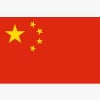 Chinese
Chinese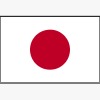 Japanese
Japanese Italian
Italian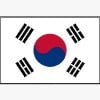 Korean
Korean Spanish
Spanish Portuguese
Portuguese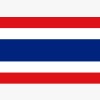 Thai
Thai Vietnamese
Vietnamese

